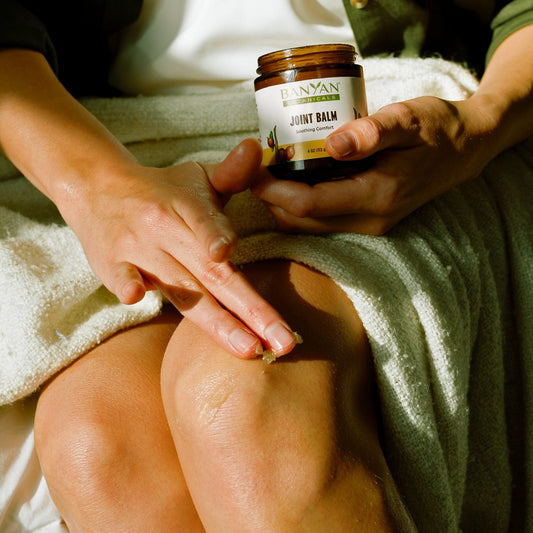The Sanskrit word sandhi (phonetically sun-thee) means “joint or juncture.” It is commonly used to indicate the times of day that are junctures—dawn and dusk. The ancient Indian sages used these times of “sandhi” as potent times for spiritual practices and meditation.
There are also sandhi points within our bodies—our joints. There are approximately 230 joints in the human body; this exceeds the number of bones we have. Our primary joints are located in our hands, arms, neck, knees, and hips. Just as we do not pay attention to the junctures in the day until they “sneak up on us” at crucial times of activity, we rarely give our joints their due attention. At least, until they become problematic. Then, we try many methods to alleviate the stress that they are causing.
With fall upon us, our internal body mechanics react to the outward changes in our environment. In Ayurveda, seasonal junctures are viewed as excellent times for cleansing and purification. We can prepare our bodies in advance for the changes it will experience in the fall. Thus, we can create a more hospitable internal environment for vata dosha, which is most likely to become imbalanced in the autumn season.
To prepare for the fall juncture, reflect on what habitually happens with your body. Do your joints pop and crack? Are they painful? If so, it is due to the dry and rough qualities of vata. Get into the regular practice of abhyanga, or oil massage, before you shower, with emphasis on the joints. Use a Vata Massage Oil or Mahanarayan Oil. The warm water helps the oil penetrate into the body, alleviating dryness. That popping and cracking happens from the inside out. If you can keep the joints lubricated, you will experience greater mobility.
If you are physically active, rub on some Joint Balm before you rush out for your job, tennis game, yoga practice, etc. Regular use makes the joints more supple and in turn, allows your body to feel ease as you move.

An easy way to keep the joints healthy is to practice some simple exercises daily. Do neck rolls in all directions. Rotate your arms and wrists clockwise and counter-clockwise. Stretch and extend your legs, practice simple squats, and rotate your ankles. Practice flexing and extending your feet. Twist your body from side to side so that the hips are given a wide range of motion. This is particularly useful if you are sitting all day.
Take a look at your body. Are there certain joint spaces where there are dry patches? If so, give those areas more attention with your oil massage or joint balm. After regular use, you will notice a marked difference!
To further support your health during the seasonal juncture, follow a vata pacifying diet. Minimize the intake of dry, rough, raw, and cold foods. These will further aggravate the joints. Rather, choose warm, unctuous meals. Avoid leftovers and microwaving. Eat meals at regular times and don't multi-task while eating. Vata is often filled with anxiety about its “to-do” list. Consequently, multi-tasking just increases the agitation and elevates the mobile quality of vata. In the long run, this also harms the joints, as they can become unstable.
Another way to make sure that your organs, joints, and cells are properly supported is to practice pranayama. Pranayama can assist with proper cellular nutrition. When the breath is directed towards the joint spaces, it stimulates the circulation of the synovial fluid. By doing these breathing exercises, the cells and tissues are nourished, and the body is able to function more optimally.
Before vata season health problems arrive unexpectedly, make a joint effort via your diet and lifestyle practices to get into healthy, healing routines.









